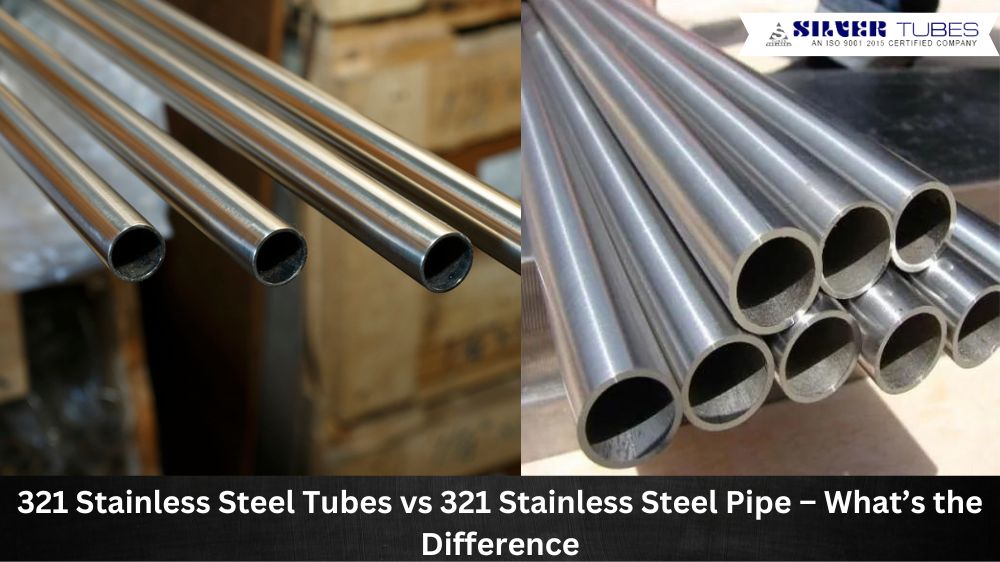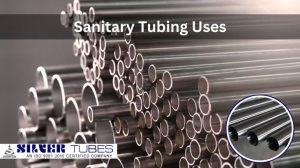Stainless steel is one of the most commonly used materials in various industries, including construction, manufacturing, and engineering. It offers numerous benefits, such as durability, strength, corrosion, and heat resistance. However, stainless steel comes in different types and forms, and it can be challenging to identify which one suits your needs. This blog post discusses the difference between 321 stainless steel tubes and pipes.
What is 321 stainless steel tubes?
321 Stainless Steel tubes are stabilized stainless steel tubes used for high-temperature and corrosive environments. It comprises 18-20% chromium, 8-10.5% nickel, 0.08% carbon, titanium stabilization, and other elements which provide excellent corrosion resistance in most industrial settings.
What is 321 stainless steel pipe?
321 stainless steel pipe is an austenitic stainless steel with excellent resistance to intergranular corrosion. It is typically used in high-temperature applications up to 1500°F (816°C). The alloy contains titanium for stabilization, making it stronger and more heat-resistant than other alloys. It also offers good weldability and formability without needing stress-relieving treatments.
Manufacturing Process
The manufacturing process is the primary difference between 321 stainless steel tubes and pipes. Tubes go through various processes, including cold drawing and pilgering, which makes them smoother, stronger, and able to withstand high pressure and temperature. Pipes are made through welding, which creates a seam that can affect the overall strength and resistance of the material.
Size and Shape
Another significant difference between 321 stainless steel tubes and pipes is their size and shape. Tubes are round and come in various sizes, while pipes are cylindrical and available in standard sizes. Depending on the application, tubes are more versatile and can be shaped into different forms, such as coiled, bent, or flanged. On the other hand, pipelines are limited in their versatility due to their standard size and shape.
Application
The application of 321 stainless steel tubes and pipes also differs. Tubes are commonly used in high-pressure and high-temperature applications, such as heat exchangers, boilers, and chemical processing equipment, due to their strength, resistance, and ability to withstand extreme temperatures. On the other hand, pipelines are suitable for transporting gases and liquids in various industries, including oil and gas, water treatment, and pharmaceuticals.
Cost
The cost of 321 stainless steel tubes and pipes differs due to their manufacturing process, size, and application. Tubes are more expensive than pipes due to their versatility, strength, and ability to withstand high pressure and temperature. Pipes are less expensive than tubes due to their standard size and shape, which makes them easier and cheaper to produce.
Corrosion Resistance
Both 321 stainless steel tubes and pipes have excellent corrosion resistance due to the presence of chromium and nickel in their chemical composition. However, tubes have better resistance to corrosion due to their smooth finish and the absence of a seam, which can weaken the material. To enhance their corrosion resistance, pipes may require additional protection, such as coating or painting.
Conclusion:
In conclusion, 321 stainless steel tubes and pipes differ in the manufacturing process, size, versatility, application, cost, and corrosion resistance. Tubes are stronger, smoother, and more versatile but are more expensive than pipes. Pipes are suitable for transportation and have a standard size and shape, making them more affordable. Both tubes and pipes have excellent corrosion resistance due to the presence of chromium and nickel, but tubes have better resistance due to their smooth finish and lack of a seam. It’s essential to consider these differences when selecting which material to use for your project, depending on its application, budget, and performance requirements.






